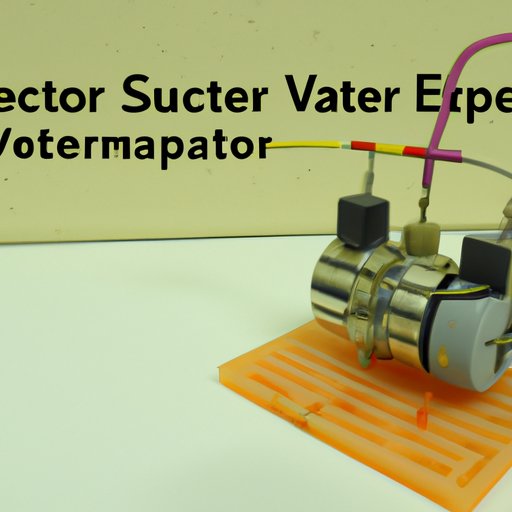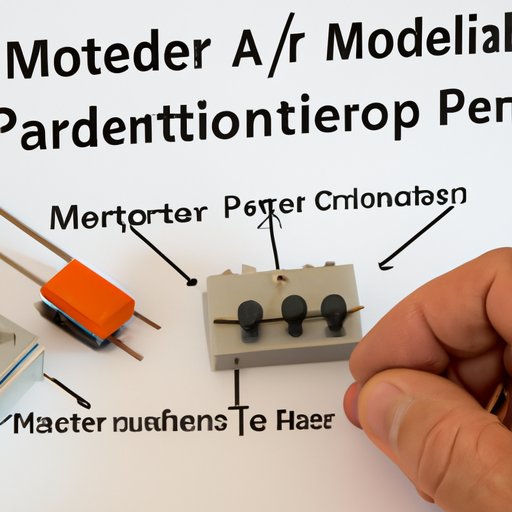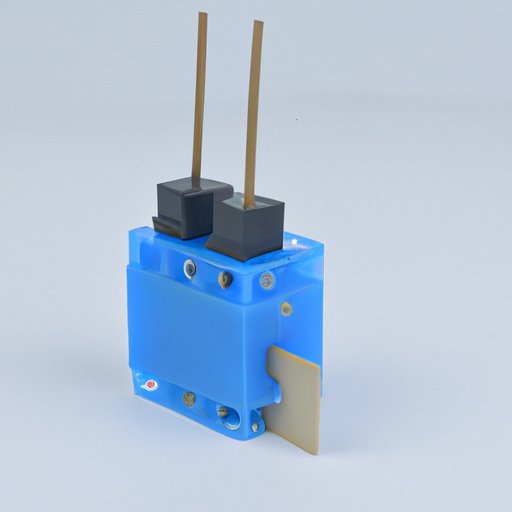Introduction:
A potentiometer is an electronic device that is used to control and measure the amount of electrical current that flows through a circuit. It consists of a resistor, which is a component that controls the flow of electricity, and a variable contact point, or wiper, which can be adjusted to change the resistance in the circuit. Potentiometers are used in a variety of applications, including controlling motors, regulating voltage levels, and measuring temperature.
Exploring the Basics of Potentiometers: How Do They Work?
Potentiometers work by adjusting the amount of resistance that is present in an electrical circuit. The resistor is connected to two terminals, one at each end, and the wiper is connected to one of the terminals. When the wiper is moved along the resistor, it changes the amount of resistance in the circuit, thus changing the flow of electricity. This allows the user to adjust the voltage level in the circuit. The amount of resistance that is present in the circuit is determined by the position of the wiper on the resistor.

A Guide to Potentiometers: The Fundamentals of Resistance Control
There are several different types of potentiometers that can be used in different applications. Linear potentiometers are the most common type and are used when the resistance needs to be adjusted over a small range. Logarithmic potentiometers are used when the resistance needs to be adjusted over a larger range. Rotary potentiometers are used when the resistance needs to be adjusted with a rotating knob. Digital potentiometers are used when the resistance needs to be adjusted with a digital signal.
Understanding Potentiometers and Their Role in Electrical Circuits
Potentiometers are used in a variety of electrical circuits to regulate the voltage level. For example, they can be used to adjust the brightness of a light bulb or the speed of a motor. They can also be used to measure the voltage level in a circuit, allowing for more accurate readings.

An Introduction to the Use of Potentiometers for Voltage Regulation
Potentiometers are used in automation and robotics to control motors and other devices. They can be used to adjust the speed or direction of a motor, as well as to program automation systems. In addition, they can be used to measure and adjust voltage levels, which is important for ensuring that the correct voltage is applied to a device.
The Role of Potentiometers in Automation and Robotics
Potentiometers can be used to control motors and other devices in automation and robotics. They can be used to adjust the speed or direction of a motor, as well as to program automation systems. In addition, they can be used to measure and adjust voltage levels, which is important for ensuring that the correct voltage is applied to a device.
Using Potentiometers to Measure and Adjust Voltage Levels
In order to measure the voltage level in a circuit, a multimeter can be used. A multimeter is an instrument that measures voltage, current, and resistance. Once the voltage level has been measured, a potentiometer can then be used to adjust the voltage level. This is done by adjusting the wiper on the potentiometer, which will change the amount of resistance in the circuit, thus changing the voltage level.

Explaining the Functionality of Potentiometers in Everyday Electronics
Potentiometers are used in a variety of everyday electronics, such as stereos, TVs, and computers. They are used to adjust the volume level, contrast level, brightness level, and other settings. They are also used to measure temperatures, such as in ovens, dishwashers, and washing machines. Potentiometers are advantageous because they are relatively inexpensive, easy to use, and can be adjusted quickly and accurately.
Conclusion
Potentiometers are simple yet powerful devices that are used to control the amount of electrical current that flows through a circuit. They consist of a resistor and a variable contact point, or wiper, which can be adjusted to change the resistance in the circuit. Potentiometers are used in a variety of applications, including controlling motors, regulating voltage levels, and measuring temperature. They are advantageous because they are relatively inexpensive, easy to use, and can be adjusted quickly and accurately.
(Note: Is this article not meeting your expectations? Do you have knowledge or insights to share? Unlock new opportunities and expand your reach by joining our authors team. Click Registration to join us and share your expertise with our readers.)
